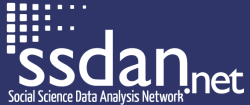Skill- After using this module, students will gain skills in:
To discover the benefits of examining real research and data to answer questions about human behavior (rather than relying on hearsay, conventional wisdom, common sense, or speculation, all of which are subject to biases that invariably lead to inaccuracies in information and judgment).
To practice interpreting percentages, frequencies, and numbers presented in tables.
To discuss social science research issues such as sampling, random sampling, and causal inference.
Creating visual tools representing quantitative data in the form of charts or graphs.
Substance: To discuss the topic of teenage motherhood.
This exercise was developed for use in an introductory psychology course. The exercise was presented as part of a unit on research methodology and statistics, and looks at marriage and childbearing in the United States.
The focus of this module will be to dispel some misconceptions about teenage motherhood and to introduce students to CHIP. Data from 1950 to 1990 will be examined by age, race/ethnicity, education, and poverty level. After examining the data, students will write their conclusion as to whether there has been an explosion of teenage mothers. Another similar exercise will focus on working mothers.
This activity uses a customized data set made from the 1990 Census and guides students through data manipulation using WebCHIP software found at DataCounts!. To open WebCHIP with the dataset for the activity, please see instructions and links in the exercise documents under teaching materials. For more information on how to use WebCHIP, see the How To section on DataCounts!
Original Archive Module: http://www.ssdan.net/datacounts/modules/index/jordan_teenmoth_index.sht…
